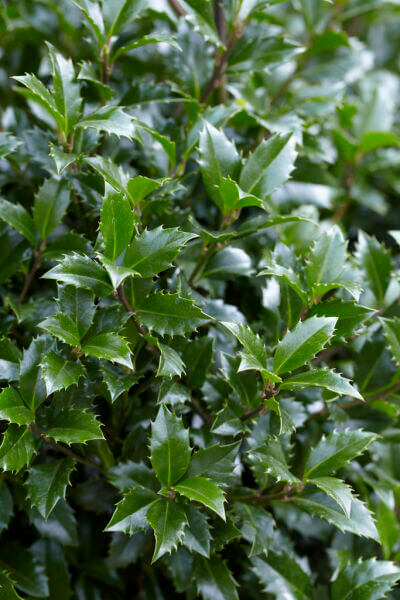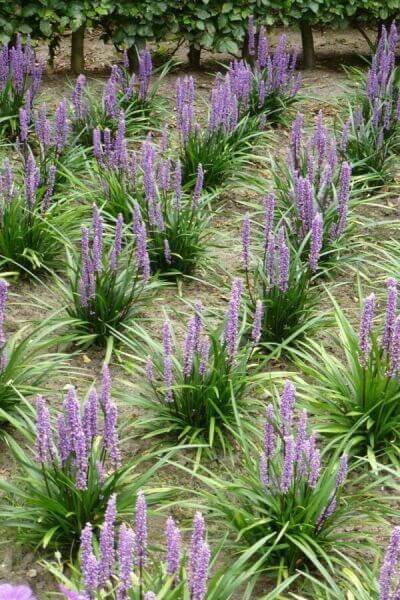Best Hedging Plants For Garden Sculptures
Best Hedging Plants For Garden Sculptures
Blog Article
Hedging Plants For Attractive Borders
Enhance your garden's allure with lavish hedge varieties such as Yew (Taxus), Thuja, Laurel, Photinia, and Bamboo, celebrated for their structural stability and environmental advantages.
Yew and Thuja offer evergreen protection and winter strength, while Laurel provides quick growth and broad, fragrant leaves.
Photinia includes seasonal charm with its dynamic red foliage, and Bamboo provides a low-maintenance, serene ambiance.
These hedges enhance air quality, reduce noise, and develop tranquil, private spaces.
Correct planting, spacing, and upkeep ensure vigorous development and ecological harmony.
Check out how these lavish ranges can elevate your garden's charm and well-being.
Key Takeaways
Change Your Garden With Lush Hedge Ranges
- Select Yew for its thick, evergreen development and unparalleled longevity.
- Select Laurel for its quick growth and broad leaves, guaranteeing fast personal privacy.
- Choose Photinia for its dynamic seasonal foliage, which turns a striking dark red.
- Use Bamboo for a low-maintenance, winter-hardy hedge with visual appeal.
- Area plants 2-3 per meter and prune frequently for optimal growth and health.
Popular Hedge Plants
When transforming a garden with lush hedge varieties, it's necessary to consider popular hedge plants such as Yew, Thuja, Laurel, and Photinia due to their special attributes and advantages.
Yew (Taxus) is extremely respected for its durability and thick, green development, making it a prime option for withstanding landscapes.
Thuja is noted for its evergreen foliage and robust winter durability.
Photinia adds seasonal vibrancy with red leaves that darken gradually, producing dynamic visual appeal.
Laurel offers fast growth and fragrant, broad leaves, ideal for quick privacy.
Furthermore, Bamboo is an exceptional option for atmosphere, offering a low-maintenance, winter-hardy option that enhances the garden's aesthetic with its classy, swaying walking canes.
These choices accommodate a variety of horticultural needs and choices.
Advantages of Garden Hedges
Garden hedges provide a multitude of advantages, making them an important addition to any landscape. These natural barriers are economical to carry out and supply considerable wind protection, boosting air flow and contributing to sound reduction. The thick foliage of hedges like Thuja and Beech makes sure privacy by obstructing presence, producing a secluded and serene environment.
Hedges likewise play a vital function in microclimate regulation, supplying a stable environment that cultivates plant development and reduces temperature level changes. Their intricate leaf structures filter toxins, improving air quality and adding to a much healthier garden ecosystem.
Additionally, hedges excel in sound reduction, soaking up and deflecting sound waves to lower ambient sound levels. This double functionality of supplying both visual and acoustic personal privacy enhances the general harmony and aesthetic appeal of any garden.
Planting and Upkeep Tips
For an effective hedge, precise preparation of the planting location is crucial. Guarantee the soil has correct pH and drain to support strong root development.
Area the plants properly for the chosen species. Water the hedge often throughout its preliminary development phase, changing as required with seasonal changes.
Execute a methodical bug control and illness avoidance strategy, utilizing chemical or organic treatments when essential. Regularly inspect for aphids, mites, and fungal infections.
Apply mulch to keep wetness and reduce weeds. Seasonal pruning promotes thick growth and air blood circulation, essential for plant health.
Following these guidelines will assist you cultivate a vibrant, well-kept hedge that boosts the appeal of your garden.
Spacing and Trimming Guidelines
Spacing and Trimming Guidelines
Proper spacing and trimming are vital for cultivating healthy, aesthetically appealing hedges. Appropriate spacing ensures each plant receives enough nutrients, light, and air flow.
Follow these standards for optimum hedge upkeep:
- Spacing: Position hedge plants 2-3 plants per meter to motivate robust development.
- Pruning Methods: Regular pruning is important for maintaining preferred hedge height and shape. Cut brand-new growth in summertime and cut down older wood throughout winter season.
- Seasonal Care: Change cutting schedules and approaches according to seasonal requirements to make sure plant health.
- Hedge Height: Routinely screen and trim to maintain the wanted hedge height and achieve uniform visual appeals.
Adhering to these steps will ensure your hedge grows, boosting both the appeal and performance of your garden.
Choosing the Right Hedge
Choosing the Right Hedge
Picking the suitable hedge involves examining aspects such as fully grown height, foliage density, and environmental strength. Effective hedge plant selection needs understanding each species' development characteristics and site-specific flexibility.
For example, Yew (Taxus) provides excellent longevity and thick development, while Thuja is notable for its winter season resilience. Furthermore, thinking about upkeep requirements is essential; fast-growing types like Laurel or Privet need regular cutting, whereas low-maintenance options like Bamboo or Ivy may be preferable for those looking for minimal upkeep.
Ecological factors such as soil type, light schedule, and moisture conditions must also direct the choice process. This careful approach guarantees the selected hedges will grow, offering both functional and visual benefits to the garden landscape.
Shipment and Planting Advice
To ensure your hedge plants prosper, they should be delivered by specialized carriers and planted without delay upon arrival.
Follow these important actions for effective planting:
- Soil Preparation: Enrich the soil with raw material to enhance drain and nutrient content.
- Planting Depth: Create a trench twice the width and equivalent to the depth of the root ball.
- Watering Strategies: Water completely after planting, keeping the soil consistently moist but not saturated.
- Mulching: Use a layer of mulch to maintain wetness and reduce weeds.
Customer Support and Service
Given the essential role of prompt help in horticultural pursuits, our consumer assistance group is available six days a week through telephone, email, and social media to provide professional recommendations and quickly attend to any issues. Their devotion to fast reaction times guarantees consumer fulfillment by solving questions connected to plant health, optimum planting approaches, and upkeep schedules.

Response Time
-------------------
Within 24 hours
This thorough support group, reinforced by an outstanding 9.3/ 10 client score, highlights our dedication to boosting the gardening experience for every single customer.
Regularly Asked Concerns
The Length Of Time Does It Take for Hedge Plants to Establish?
Hedge plants typically require one to three years to become totally developed, with the specific period differing by types and growing conditions.
Reliable care throughout this vital duration is essential for robust growth. Constant watering, alert weed control, and proper fertilizer application are essential in promoting strong root advancement.
For instance, fast-growing types like Laurel might establish quicker, while slower-growing varieties such as Yew might take longer. Thorough upkeep speeds up the establishment process, leading to healthy and dense hedges.
What Are the Best Hedge Plants for Privacy?
The concern of the finest hedge plants for personal privacy includes assessing evergreen and deciduous choices.
Evergreen hedges like Thuja, Laurel, and Cypress provide year-round coverage, making sure constant privacy.
On the other hand, deciduous hedges such as Beech use seasonal privacy, shedding leaves in colder months.
Secret maintenance tips for personal privacy hedges consist of regular cutting, fertilizing in spring, and appropriate spacing-- typically 2 to 3 plants per meter.
In addition, constant watering and diligent weed elimination are crucial for promoting healthy, thick growth.
Can Hedge Plants Bring In Wildlife to My Garden?
Yes, hedge plants can draw in wildlife to your garden by providing vital benefits like shelter, food, and nesting websites, thus boosting local biodiversity. For instance, yew, holly, and laurel are outstanding for attracting birds, while ivy supports a range of insects.
However, it is necessary to note that there are some disadvantages, such as increased maintenance to manage bugs and regular maintenance. Thoroughly choosing and keeping hedge varieties can help stabilize these downsides and benefits, eventually cultivating a vibrant and sustainable environment in your garden.
Are There Any Flowering Hedge Plants Available?
Yes, there are flowering hedge plants readily available that can enhance the beauty of your garden.
For instance, Elaeagnus, likewise known as Olive Willow, produces fragrant white flowers in the fall, including a touch of sophistication.
Photinia, another popular option, showcases vibrant red leaves that develop into an abundant green, developing a vibrant visual effect throughout the seasons.
To guarantee these plants prosper, it's vital to practice proper pruning techniques and seasonal maintenance, such as trimming brand-new development in the summer season and cutting down in the winter season.
These measures will help maintain the health and aesthetic appeal of your flowering hedges.
How Do I Prevent Insects in My Hedge Plants?
To prevent insects in hedge plants, utilize natural insect control techniques and preserve correct hedge care. Present helpful pests like ladybugs, which victimize damaging bugs, to develop a well balanced community.
Routinely examine your hedges for signs of invasion and without delay get rid of any afflicted parts to avoid the spread. Guarantee the health of your hedges by applying balanced fertilizers and providing appropriate water.
Make use of mulching to maintain soil moisture and proper spacing to reduce plant stress and promote robust development. These practices collectively help in reducing pest concerns and keeping a healthy hedge.
Conclusion
In essence, selecting the best hedge varieties such as Yew, Thuja, and Laurel here can change any garden into a relaxing haven. These plants provide year-round plant, boost aesthetic appeal, and offer useful benefits like noise decrease and wind security.
Proper planting strategies, precise spacing, consistent watering, and seasonal cutting are crucial for optimal development.
Trusted shipment services and expert consumer support make sure a seamless experience from purchase to planting, making it simpler than ever to raise your outdoor area.
Garden hedges offer a plethora of advantages, making them an important addition to any landscape. These natural barriers are economical to implement and supply considerable wind protection, improving air circulation and contributing to sound reduction. The thick foliage of hedges like Thuja and Beech guarantees personal privacy by obstructing presence, creating a remote and tranquil environment.

Pruning Strategies: Routine pruning is important for maintaining wanted hedge height and shape. Cut new development in summertime and cut back older wood during winter season.
Report this page